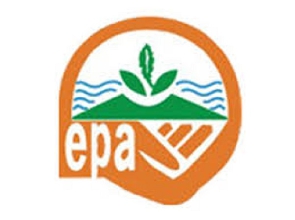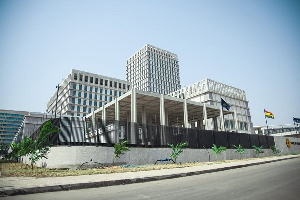In a few weeks, we shall be ushered into the yuletide and certainly exposed to the maddening levels of noisemaking which characterise observance of the festive season.
As usual, the Environmental Protection Agency (EPA) would come out with warnings about excessive noisemaking as well as list the noise-related complaints received in the year, without a corresponding accounting for actions taken to deal with the issues arising.
The 2033 Christmas season could be remarkably less noisy if the EPA had succeeded in implementing the two major initiatives the Agency introduced in 2022 to facilitate the reduction of noise levels in our communities. In August of that year, the EPA declared its intention to deploy Sound Level Meters (SLMs) to Metropolitan and Municipal Assemblies for the use of Environmental Health officers in monitoring noise levels in the Central Business Districts (CBDs).
Disappointingly, the continuing din in the city- centres gives a lie to any impression that the devices have been deployed or are being effectively used.
At an impressive press conference later that year, the EPA informed the nation that it was embarking on nationwide exercises to sensitise and comprehensively enforce the legal regime on noisemaking.
Initially meant for the week before and during the Christmas season, the Agency planned to permanent the measures. After almost one year, however, the EPA has not been able to kick-start programmes to educate the public on issues of noise making. There is no doubt that the work of the enforcement officials would be dogged with intransigence and misunderstandings because of the lack of appreciation of the nature, health implications, and legal consequences of unbridled noisemaking.
The much-anticipated teaming-up with the Metropolitan, Municipal, and District Assemblies (MMDAs) to check noisemaking, has also unraveled. This is a missed opportunity because the combination of the material, human, and legal resources of the two bodies would have had a tremendous impact on the noise situation.
For example, though the EPA and the MMDAs would both require establishments to meet the Ambient Noise levels for their areas of operation, the EPA would additionally have insisted on Environmental permits before the commencement of operations by heavy noisemakers like commercial, religious, entertainment, industrial concerns.
The MMDAs' would also have insisted that noisy businesses limited their activities within their premises or installed soundproofing to avoid disturbing the neighbourhoods. The envisaged supporting role for the Police would have unnecessarily limited the utility of a Service that has important noise-controlling roles under the Criminal Offences Act, 1960 (Act 29) and the Public Health Act, 2012 (Act 851).
Enforcement of section 296 (8) of Act 29 for instance, will rein- in owners and operators of facilities that do not have formal authorization to engage in public noisemaking between 8 pm and 6 am. For most of the noisiest hours of our evenings, residents would be able to rest and recuperate from the exertions of the day.
The unhelpful silence of an institution which is expected to appreciate the value of communication, has kept the public from knowing whether the mapping and monitoring exercises proved useful in identifying the notorious noisy areas.
We cannot also tell whether the enforcement measures planned for the Christmas season were ever carried out.
It is baffling that an Agency with dynamic and purposeful leadership would in its "year of action," not be cited for enforcement actions except in May 2003, call on religious bodies and entertainment centers in the Volta Region, to regularise their operations and respect the laws on noise disturbance. The Agency would have to gird its loins because the years of inaction have allowed the phenomenon to spread so widely that once-serene environments like the Akuapem Ridge and plush neighborhoods of the capital have been inundated with intolerable levels of noisemaking.
The December 7, 2023, Graphic Online report of residents of upscale Labone "battling with noise from the numerous pubs, restaurants, and lounges that have engulfed the area in recent times," is highly indicative of the dangers we are courting. From the report, the Municipal Authority after ascertaining the excessiveness of the noise emanating from the entertainment venue, has not succeeded in abating the nuisance or closing down the lounge.
Given the residential nature of the area, the EPA should have ensured that the siting and operation of the facilities with heavy noisemaking potential conformed to the requirements for acquiring and maintaining Environmental permits. The EPA should have shown some clout in bringing the situation under control.
One cannot imagine how the mandated authorities would be able to deal with noise pollution in a non-descript community when they are unable to control a localised noise problem in a sophisticated neighbourhood. As the primary noise-controlling institution, the EPA has floundered at the chance of placing noise pollution on the front burner since the passage of the Environmental Protection Agency Act, of 1994 (Act 490).
In the coming years, the Agency must live up to its duty of protecting the populace from the debilitating mental and physical health effects of incessant and excessive noisemaking. The EPA should be able to cooperate and liaise with relevant and well-resourced public and non-state bodies like the National Commission for Civic Education (NCCE), Ghana Broadcasting Corporation (GBC), and Ghana Independent Broadcasters Association (GIBA) to propagate pertinent information.
Much as the leadership of the Agency deserves appreciation for doubling staff levels and raising the equipment state, the improvements should reflect in the preparedness and resolve of its officers to formally receive and deal with noise complaints.
Outcomes of investigations as well as Environmental reports must be communicated to the complainants to enable them to pursue other options if the EPA balks at taking requisite actions. Officials of the EPA must be ready to leverage its authority to "issue directives, procedures or warnings to such bodies as it may determine, to control the volume, intensity, and quality of noise in the environment."
It is of crucial importance that outcomes of enforcement actions, including prosecutions are widely circulated to serve as deterrence. The EPA must be proactive and not always wait for the public to lodge complaints. The officials must intervene and halt on- going construction of facilities when it is obvious that neighbourhoods would be discomfited by their operations.
The headship must question officials who allow the siting and operation of noisy facilities within residential areas and also allow their offices to be overwhelmed with excessive noisemaking. Reports about unsatisfactory service or unresponsiveness of field officers must not be swept under the carpet. With a few weeks to the end of the year, the EPA is respectfully reminded that the Ghanaian public would be expecting answers for its inactions during the public engagement to mark the end of 2023.
Opinions of Friday, 15 December 2023
Columnist: William K. Asiedu















